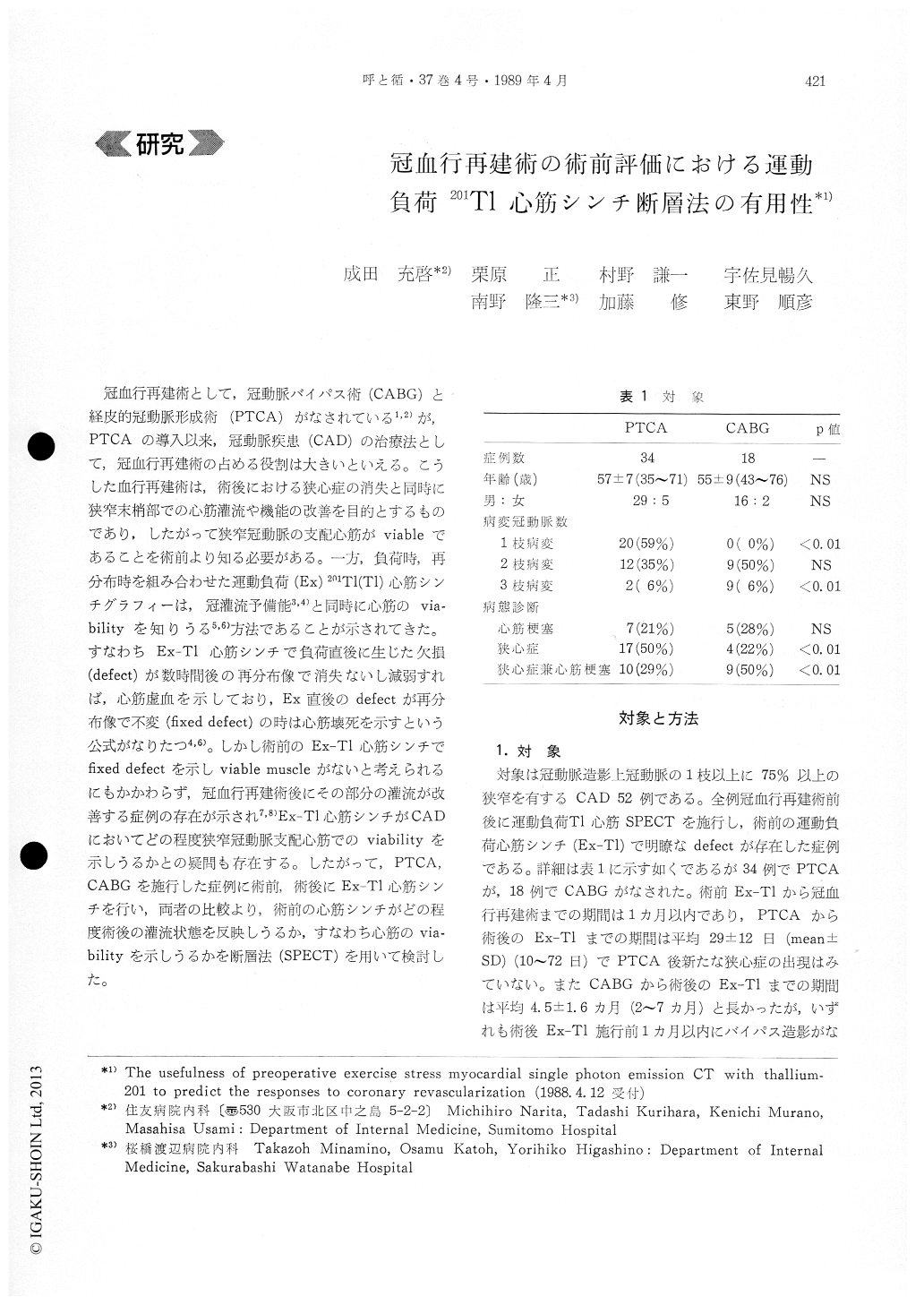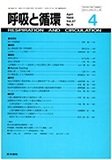Japanese
English
- 有料閲覧
- Abstract 文献概要
- 1ページ目 Look Inside
冠血行再建術として,冠動脈バイパス術(CABG)と経皮的冠動脈形成術(PTCA)がなされている1,2)が,PTCAの導入以来,冠動脈疾患(CAD)の治療法として,冠血行再建術の占める役割は大きいといえる。こうした血行再建術は,術後における狭心症の消失と同時に狭窄末梢部での心筋灌流や機能の改善を目的とするものであり,したがって狭窄冠動脈の支配心筋がviableであることを術前より知る必要がある。一方,負荷時,再分布時を組み合わせた運動負荷(Ex)201Tl (Tl)心筋シンチグラフィーは,冠灌流予備能3,4)と同時に心筋のvia-bilityを知りうる5,6)方法であることが示されてきた。すなわちEx-Tl心筋シンチで負荷直後に生じた欠損(defect)が数時間後の再分布像で消失ないし減弱すれば,心筋虚血を示しており,Ex直後のdefectが再分布像で不変(fixed defect)の時は心筋壊死を示すという公式がなりたつ4,6)。しかし術前のEx-Tl心筋シンチでfixed defectを示しviable muscleがないと考えられるにもかかわらず,冠血行再建術後にその部分の灌流が改善する症例の存在が示され7,8)Ex-Tl心筋シンチがCADにおいてどの程度狭窄冠動脈支配心筋でのviabilityを示しうるかとの疑問も存在する。したがって,PTCA,CABGを施行した症例に術前術後にEx-Tl心筋シンチを行い,両者の比較より,術前の心筋シンチがどの程度術後の灌流状態を反映しうるか,すなわち心筋のvia-bilityを示しうるかを断層法(SPECT)を用いて検討した。
To evaluate the usefulness of preoperative exercise stress (Ex) myocardial single photon emission CT (SPECT) with thallium-201 to predict the responses to coronary revascularization (CRV), Ex-SPECT's were obtained in 42 patients with coronary artery disease (CAD). In 34 patients angioplasty was per-formed and in 18 patients coronary bypass surgery was undergone. Before and after CVR, Ex-SPECT's were obtained both at immediately after Ex (Initial) and 3 hours later (RD) by the rotating gamma camera.
Initial images before CRV showed definite perfu-sion defects (+3) in 76 myocardial segments. Perfu-sion abnormalities at RD images were graded into 4(+3 to 0) by visual interpretation. "4-3" indicatec fixed defect and "0" indicated no perfusion abnor. mality. At RD images 17 segments showed fixer defect and 59 segments showed improved perfusior more than one grade. After CRV, all 59 segment: with improved perfusion at RD images showed im provement of perfusion in comparison with initia. images before CRV. Out of 17 segments with fixer defect before CRV, 14 segments showed perfusior defect with 4-3, while 3 segments showed improvec perfusion after CRV. These 3 segments had ECC evidence of myocardial infarction. In these 3 seg-ments, Ex-SPECT's before CRV showed abnormallylow myocardial Ti washout rate (WOR) despite they indicated fixed defect visually. On the contrary, other 14 segments with fixed defect showed normal WOR before CRV.
In conclusion, visually interpreted Ex-SPECT's before CRV predict the myocardial perfusion after CRV in most of cases. In a small number (especially infarction segments) Ex-SPECT's before CRV cannot predict the improvement of myocardial perfusion after CRV by visual inspection, but WOR abnor-mality before CRV is useful to prospect their resu-lts.

Copyright © 1989, Igaku-Shoin Ltd. All rights reserved.


